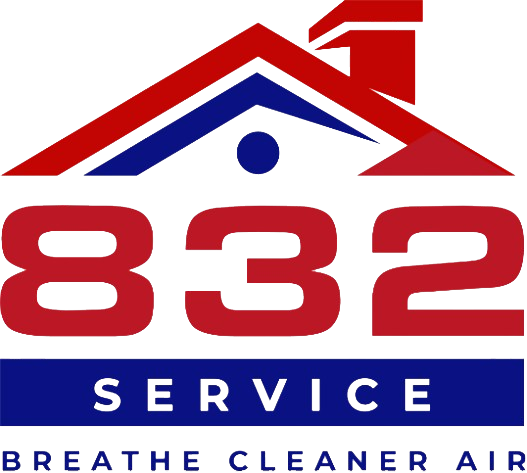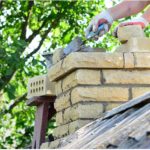A chimney is a significant part of many houses and is used for ventilating fireplaces, wood-burning stoves and other heat appliances. One important part of the chimney system is the chimney damper. In this post, we will look into what a chimney damper is, its significance and how it operates. We will also examine on how to open your chimney damper as well as close it, types of dampers available, differences between fireplace and chimney dampers. For expert help in all matters related to chimneys, hire 832 Service.
How to Open and Close Your Chimney Damper
To ensure that your fireplace functions properly and your home remains secure you must know how to use your damper correctly when operating it either way around. Here’s how you can open or close your chimney damper:
Find the Damper Handle: There is a handle or lever found above the fireplace opening in most cases.
Open the Damper: On some designs you simply push or pull the handle. Others have rotary controls which you turn to open them.
Check for Open Position: Look at it to make sure that the damper has been opened fully such that smoke as well as gases can get out.
Close The Damper: After all embers are cool down completely and fire goes off- reverse your steps hence shutting up the throat totally within a particular time period.
Types of Chimney Dampers
Knowing about different categories of dampers helps you identify what suits best for your house. Check these main groups:
Top-Sealing Dampers: They offer tight seal against heat loss as well keeping debris plus animals away thus being installed on top sections of chimneys.
Throat Dampers: These are commonest type usually seen in traditional fireplaces that lie just above firebox one section up from ash pit followed by combustion chamber upon which ash pit directly opens up onto throat; so they can be closed tightly against any drafts blowing in from outside.
Rotary Dampers: They are usually suitable for wood stoves, and permit the passage of smoke and air through a revolving mechanism.
Difference Between Fireplace Damper & Chimney Damper
Most individuals interchangeably use fireplace damper and chimney damper but there are several distinctions between them:
Fireplace Damper: This usually refers to the throat or top opening of a fireplace above the firebox.
Chimney Damper: Any damper right inside the chimney system, including top-sealing dampers can be referred to as chimney damper.
Understanding these differences can help you communicate more effectively when seeking repairs or replacements.
How Do Fireplace Dampers Work?
The work of fireplace dampers is make sure that there is an open airflow running in and out of chimneys. This is how they operate:
Air Regulation: The purpose for opening up the flue is to allow air to enter into it so that all gases can move away while smoke rises upwards during combustion process.
Heat Retention: When not burning anything or have left your home, close off possible heat loss by shutting this device within a certain time period thus containing warm air which in turn helps improve energy efficiency levels at home by preventing any flow out through your heating unit’s flue pipe where most escapes took place before sealing became effective again once. Websites like Energy Star offer information about insulation in case you want some tips on saving money while keeping cool during summer months – always remember that less leakage means lower bills!
Safety: Fireplaces should have working dampers so they don’t back-draft into rooms with toxic fumes such as carbon monoxide (CO). Sometimes people leave fires unattended temporarily thinking nothing major could happen until their dwellings fill up quickly due excess smoking caused by improper functioning flaps used control ventilation under normal circumstances; hence let this never be you risking life alongside others who also live within same building.
How Does a Chimney Damper Work?
A chimney damper like a fireplace damper functions by sealing off the chimney flue, usually at its top. Here’s a closer look:
Sealing the Chimney: When closed, roof top sealants shut out cold air, precipitation and pests from entering flues.
Improving Efficiency: By providing a tight seal, heat loss can be reduced through use of few efficient top-sealing dampers thereby saving on energy costs.
Ease of Operation: Modern chimney dampers are designed for easy operation, often controlled by a simple handle or chain.
Opening and Closing Chimney Damper
The process of opening and closing a chimney damper is similar to that of the fireplace damper, but there may be some slight differences depending on the type.
Top-Sealing Dampers: These are operated by a cable or chain system that can be accessed from the fireplace.
Throat Dampers: They have a handle or lever, which can be found directly on top of the firebox.
Tips for Safety
Regular Inspection: Always inspect your damper for any signs of wearing out or damages.
Expert Maintenance: You need to organize annual inspections and cleaning exercises with professionals like 832 Service who offer chimney service.
Finally, the significance of having a chimney damper in your chimney is to regulate air flow, improve efficiency as well as ensure safety. Knowing how to operate and maintain your damper will greatly enhance your use of a fireplace. To get professional advice on all issues concerning chimneys you should contact them via online service now.



